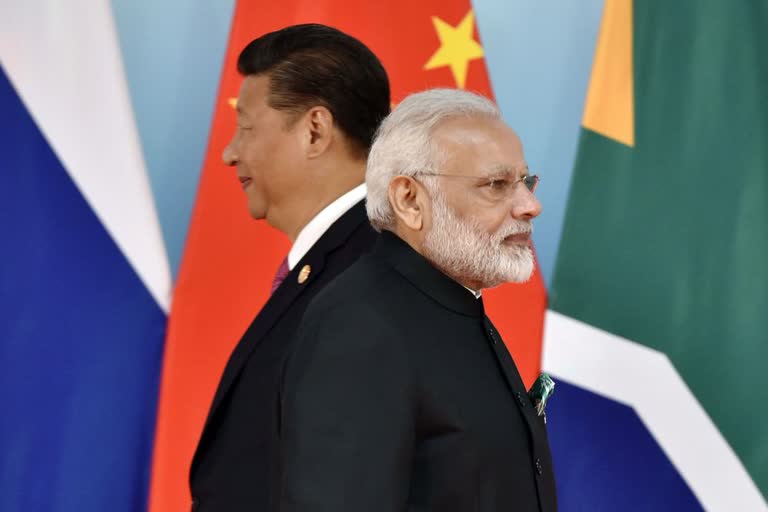Hyderabad: India’s boycott of China’s Belt and Road Initiative (BRI) conference, consecutively for the second time, raised the curtains for the debate on India’s stance. While a section of policy experts is disappointed over India’s ‘missed opportunity’ there is another section of experts that out rightly rejects any inclination towards the Dragon.
While pro-BRI advocates say that since the BRI seeks to unleash trade and investment potential by improving connectivity across Asia, Europe, Africa and Latin America, India should reap the benefits by joining the global-scale project, the latter section see the BRI as a mark of aggression and even as a larger conspiracy of China to control the geo-politics across the continents, by bringing the smaller and poorer nations under its debt trap. They say that the China-Pakistan Economic Corridor (CPEC), which is a part of the BRI and passes through the Pakistan occupied Kashmir (PoK), is against the sovereign interests of the country.
India has nothing to lose by not joining
It is beyond doubt China has emerged as a parallel power centre to the Western dominance in the global political stage. The very fact that it could manage to rope in representatives from more than 100 nations for the BRI Conference, including the leaders of the governments from 37 countries, depicts its reach and capability in the first place and then the enthusiasm of the rest of the world to engage China.
However, the benefits expected to accrue on India by joining, in terms of infrastructure development and technology up gradation and the strategic advantage of being associated with a ‘would be super power’ appears to be exaggerated. It is in this context one needs to see India’s decision to stay away from the BRI.
Read more:Xi urges world leaders to join Belt and Road plan
China and India have been at logger heads over border disputes and China-Pakistan Economic Corridor. At the same time, it is pertinent to note that India too is wielding significant influence in Myanmar and Thailand through ‘Act East policy’, engaging Iran and other Central Asian countries via ‘Go West Strategy’ and also putting considerable efforts in developing multi modal linkages with Bangladesh and Myanmar.
India also enjoys healthy relations with almost all the developed countries in the West. Moreover, it is expected that by 2050 while India’s working population would increase by 200 million, and the same in China would shrink by 200 million. Hence, by not joining, India won’t lose out anything and need not share China’s ambition.
Debt Trap: Myth vs Reality
The argument that China pushing the partners of the project into ‘debt trap’ is not true. In fact, it would be the reverse. As the debt profile of the most of the countries to which China is lending, is in no way in line with the international standards. For instance, in the Peking University report released in December 2018, Pakistan, which receives BRI loans worth USD 60 billion came second last in the list of 94 BRI countries on the front of financial regulation quality and trade openness.
China could not get the assets of the defaulting nations on its name for lease (Srilanka’s case) or just confiscate them, as many argue. This is due to the fact that the geo-political and strategic realities differ from one country to the other and any such attempt by China would only sabotage the Dragon’s dream of becoming global super power.
The only option left out would be a debt restructuring or settling down for lesser returns over its investments. Thus it is China, which plans to spend USD 1 trillion on the project, appears to be walking into a debt trap and not the other nations.
This is the reason why the Chinese Premier is urging the world to a partner in its initiative, just to diversify and spread the risk. Hence China is doing what it thinks is best and India did the same, by not subscribing it.



